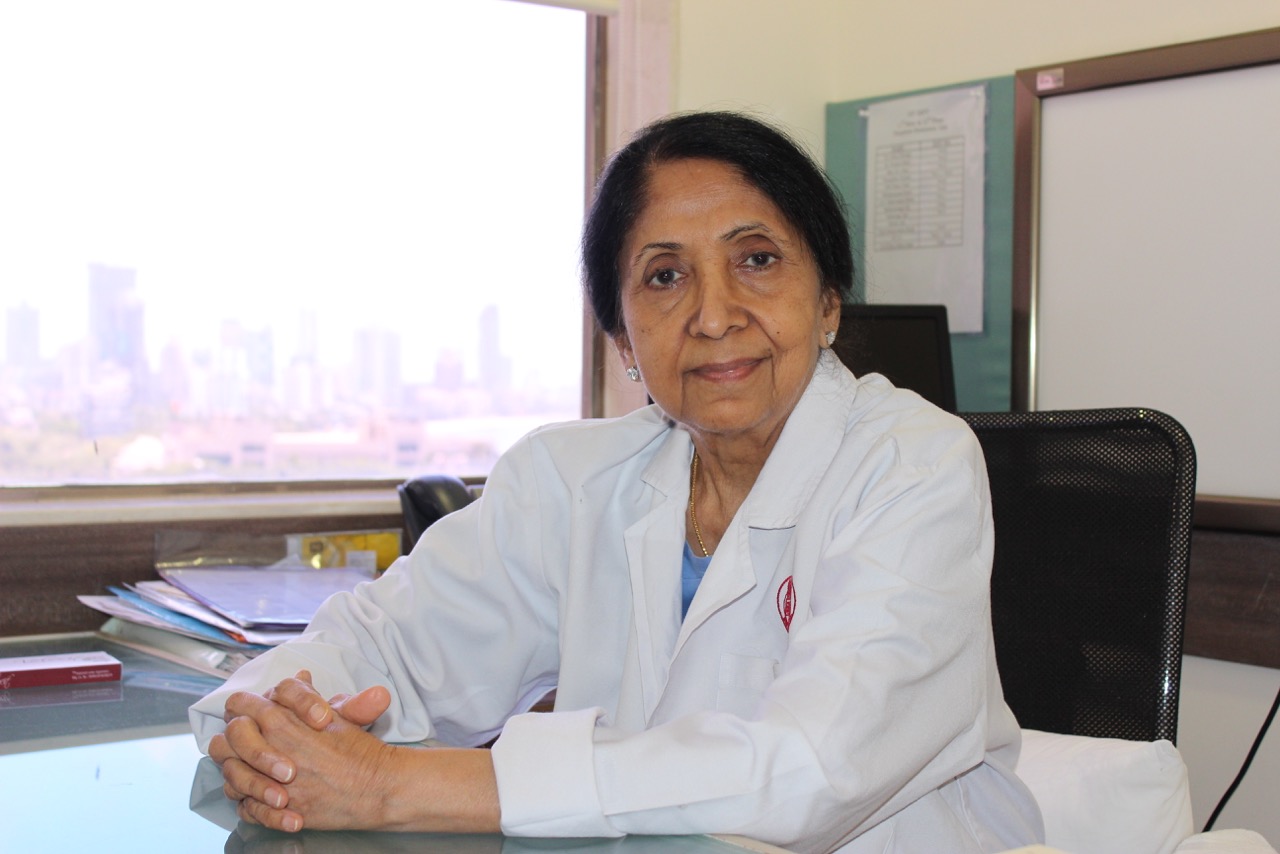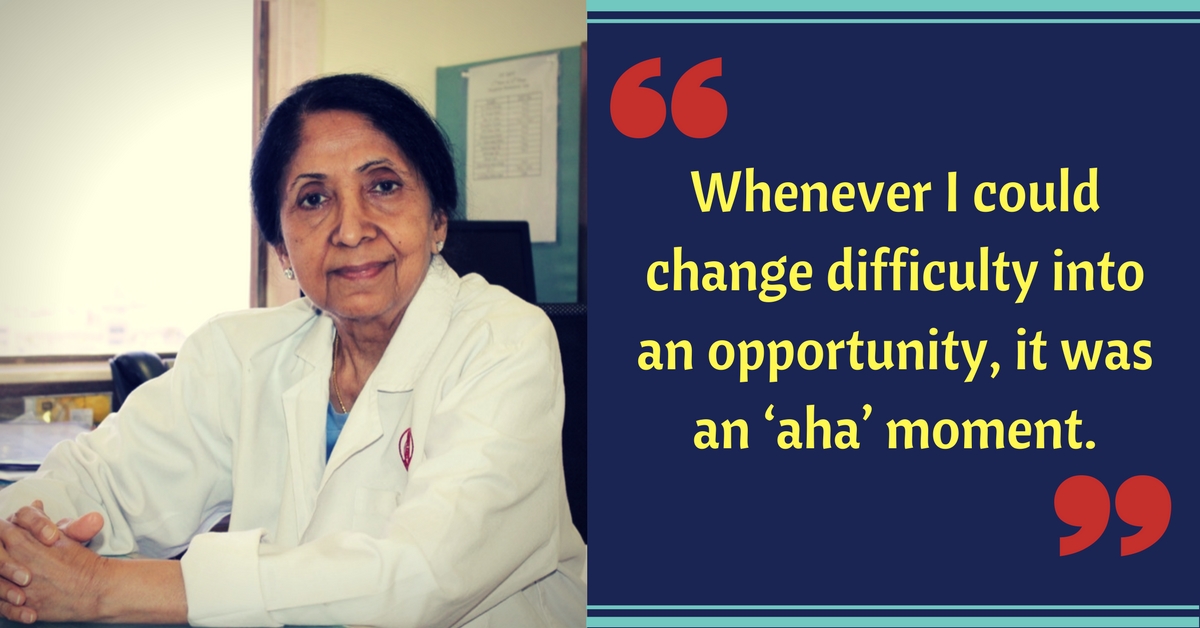Health Heroes – This article is part of a series to celebrate some of India’s most amazing doctors and to understand the incredible work they are doing.
It is not every day that you smile when you first read the news. Such was the news in 2016 about Harsha Chawda, India’s second test tube baby, who successfully gave birth to her baby boy, by the same doctor who delivered Harsha 30 years ago.
This positivity made me reach out to Dr Indira Hinduja, who is the face behind the birth of Harsha and more than 15,000 such babies conceived through In vitro fertilisation (IVF) in India.

IVF is a type of assisted reproductive technology (ART), which is used for infertility treatment. In this method, the egg and sperm obtained from the parents are fertilised outside the human body (i.e., in vitro).
The fertilised egg is then grown for 2-6 days in controlled laboratory conditions before being implanted into the woman’s uterus to establish a successful pregnancy. The development of IVF technology in the 1970s is a milestone in modern medicine that got Sir Robert G Edwards the Nobel Prize in Physiology or Medicine in 2010.
Dr Indira Hinduja was one of the first doctors to bring IVF to India. Trained as a gynaecologist and infertility specialist at the prestigious King Edward Memorial hospital in Mumbai, Dr Indira comes from a modest background.
Having studied at a municipal school in Belgaum, Karnataka with minimal facilities at her disposal and in an era where girls were discouraged from attending schools, she has come a long way to being awarded the Padma Shri in 2011.
As she puts it, being a child of this era she knows the importance of opportunity. “There were many turns and twirls in (my) life so whenever I could change difficulty into an opportunity, it was an ‘aha’ moment.”
While witnessing the sufferings of her father inspired her to take up medicine, her “internal force” drove her excellence. Currently, Dr Hinduja continues to practice at the Hinduja hospital in Mumbai helping couples with infertility issues.
Infertility in India is a highly prevalent problem affecting almost 1 in every 7-8 couples.
Importantly, as she tells us that, “Infertility is no longer an urban phenomenon and affects both men and women. In women, one of the top leading causes of infertility is an infection, often in the fallopian tubes, which transport the egg to the uterus and where the sperm and the egg meet.”
Other common factors for infertility in women are hormonal, ovarian and uterine (either developmental defects or issues with space in the uterus for example due to polyps, fibroids etc.)
In males, on the other hand, the leading causes are erectile ejaculatory dysfunction, abnormal count and motility of sperms.
Three decades ago, when Dr Hinduja started practising, infertility was a taboo topic. Due to the lack of openness, couples could not discuss the (infertility) problems, delaying their decisions and treatments, leading to poor results.
“Fortunately,” she says, “education and knowledge have no more kept it as a hush-hush issue anymore. One can now see people seeking treatment at the age of 30 years, a scenario unheard of a couple of decades ago.”
Dr Hinduja also mentions that, “Fascinatingly, while oocyte (egg) preservation techniques were originally developed for IVF to enable women who cannot deal with pregnancy during their fertile period, they are now beginning to be applied beyond these medical conditions. For example, several young women are now opting for preserving eggs, which can be used later when they are ready to have babies, and if this becomes a norm, it will be for the betterment of the society.”
You may also like: Trouble Conceiving? This Portal Will Bust Infertility Myths While Helping You
While IVF has become a commonplace procedure, several myths about it prevail. Dr Hinduja shares that “many people continue to wrongly believe that IVF is a treatment for elderly couples, that complete bed rest is required during this treatment, and that surrogacy may contribute to the genetic makeup of the child.”
With dedicated and innovative doctors like Dr. Hinduja, maternal and child healthcare in India is surely in safe hands.
She believes that the next decade of research will involve understanding the unexplained causes of infertility on genetic, cellular, and molecular levels, however, several practical challenges for wide application of ART methods in India, remain.
For instance, she says, “the unavailability of these procedures at government hospitals and their high costs make them unaffordable for most people.” Moreover, unlike other countries such as Israel, Canada, Germany, and New Zealand, ART procedures are not covered under health insurance schemes in India.
With a growing social acceptance towards infertility and an impressive availability of safe treatment options, the time is now ripe for us Indians to follow suit and ask for the inclusion of ART procedures in our insurance schemes towards realising the Right to Health.
(Written by Priyamvada Chugh)
Like this story? Or have something to share?
Write to us: contact@thebetterindia.com
Connect with us on Facebook and Twitter.
NEW: Click here to get positive news on WhatsApp!
If you found our stories insightful, informative, or even just enjoyable, we invite you to consider making a voluntary payment to support the work we do at The Better India. Your contribution helps us continue producing quality content that educates, inspires, and drives positive change.
Choose one of the payment options below for your contribution-
By paying for the stories you value, you directly contribute to sustaining our efforts focused on making a difference in the world. Together, let's ensure that impactful stories continue to be told and shared, enriching lives and communities alike.
Thank you for your support. Here are some frequently asked questions you might find helpful to know why you are contributing?

